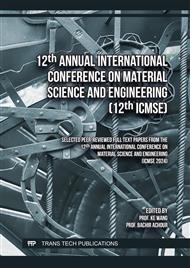p.77
p.83
p.91
p.99
p.107
p.117
p.123
p.133
p.141
Extreme Learning Machine-Autoregression Integrated Moving Average Composite Model
Abstract:
Excessive carbon dioxide emissions are the primary factor causing global warming. Currently, models for controlling carbon dioxide emissions mainly focus on population, economy, and technology. A significant amount of research has been conducted on multivariate linear regression analysis encompassing factors such as population, GDP, and energy consumption. However, the studies examining the impact of green finance on emissions have been limited to qualitative and semi-quantitative levels, lacking in-depth and systematic research. This study establishes a composite model combining the Autoregressive Integrated Moving Average (ARIMA) model and Extreme Learning Machine (ELM) model. This composite model is employed to analyze the impact of Hubei provinces’ permanent resident population, GDP, comprehensive energy consumption, and green finance index on carbon dioxide emissions. In the ELM model, the impact of four variables-population, GDP, comprehensive energy consumption, and green finance index-on carbon dioxide emissions is investigated. Using data from 2002 to 2019, the ARIMA model is applied to predict these four variables after differencing. The ELM model's prediction of carbon dioxide emissions has a very small relative error compared to actual results. The composite mode- ELM-ARIMA model is used to analyze the province's carbon dioxide emissions from 2024 to 2030.
Info:
Periodical:
Pages:
133-139
Citation:
Online since:
June 2025
Authors:
Price:
Сopyright:
© 2025 Trans Tech Publications Ltd. All Rights Reserved
Share:
Citation:



